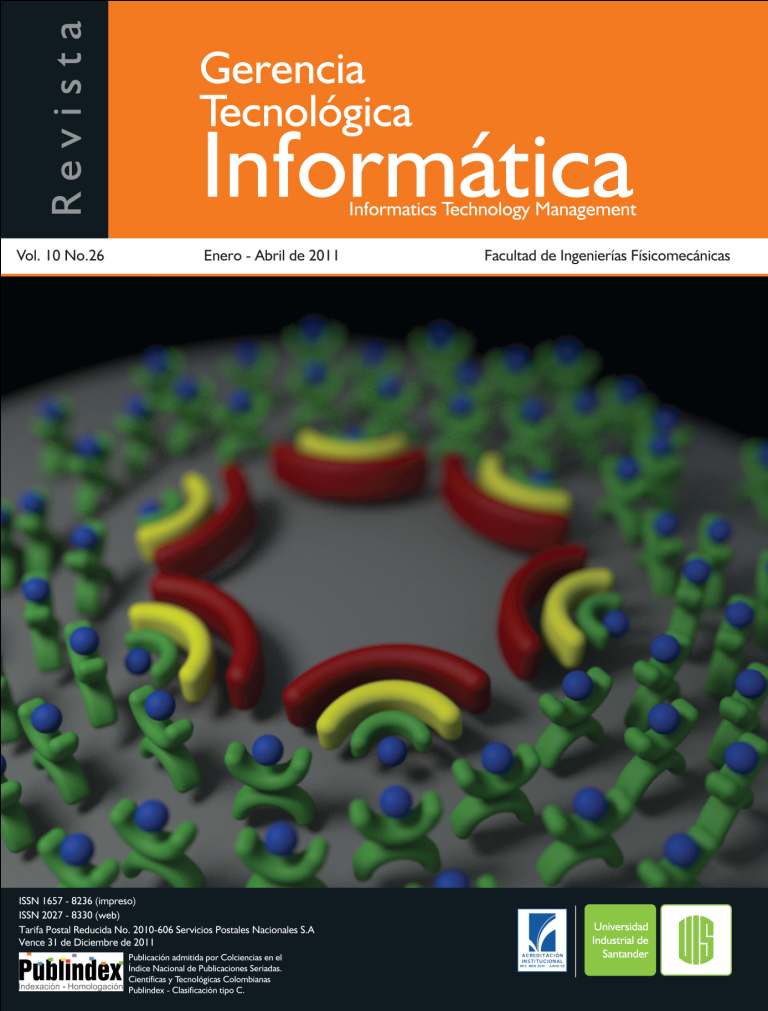Publicado 2011-10-20
Cómo citar
Resumen
Los sistemas de comunicaciones de múltiples entradas y múltiples salidas son la base de las altas capacidades de los sistemas de comunicaciones de tercera y cuarta generación, es importante analizar las características de nivel físico de dichos sistemas y como la variación de sus parámetros influyen en el desempeño. En el entorno universitario, es necesario disponer de herramientas que permitan analizar el desempeño de los sistemas MIMO, en este trabajo se presenta el análisis y diseño a nivel físico de un sistema MIMO 2x2 y 4x4 con canal Rayleigh, con variaciones en el esquema de modulación y en los algoritmos de detección. El trabajo se desarrolla de acuerdo a una metodología específica para la simulación de sistemas de telecomunicaciones. El sistema se implementó en Matlab y se validó de acuerdo a trabajos previamente realizados, se configuraron diferentes escenarios sobre los cuales se comprobó que el desempeño del sistema MIMO depende del número de antenas en transmisión y en recepción, la modulación y el algoritmo de detección, consiguiéndose el mejor desempeño para el sistema MIMO 4x4 con modulación QPSK, con algoritmo de detección de máxima verosimilitud, pero con elevada complejidad computacional, seguido por el algoritmo esférico y finalmente los algoritmos suboptimos MMSE y ZF.
PALABRAS CLAVES: Sistemas MIMO, Desempeño del Nivel Físico, Algoritmos de detecciónEsquemas de multiplexación, Matlab.
ABSTRACT
Communications systems of multiple inputs and multiple outputs are the basis of high capacity communications systems of third and fourth generation, it is important to analyze the physical characteristics of these systems and how the variation of the parameters affecting performance . In the university environment, it is necessary to have tools to analyze the performance of MIMO systems, this paper presents the analysis and design at the physical level of a 2x2 and 4x4 MIMO Rayleigh channel with variations in the modulation scheme and detection algorithms. The work is carried out according to a specific methodology for the simulation of telecommunication systems. The system was implemented in Matlab and validated according to work already performed, different scenarios were configured on which it was found that the MIMO system performance depends on the number of antennas in transmission and reception, modulation and detection algorithm achieving the best performance for the 4x4 MIMO system with QPSK modulation, detection algorithm with maximum likelihood, but with high computational complexity, followed by the algorithm and finally spherical suboptimal MMSE and ZF algorithms.
KEYWORDS: MIMO Systems, Physical Layer Performance, Detection Algorithms, Multiplexing schemes, Matlab.
Descargas
Referencias
- [I] H. Jafarkhani, “Space-Time Coding: Theory and Practice”, “Cambridge University Press”, vol. 1, Pag. 221-249, Publicación 2005. [Citado 15 de Diciembre del 2009].
- [II] C. Oestges y B. Clerckx, “MIMO wireless communications”, Elseiver, 2007. [Citado 17 de Agosto del 2009].
- [III] D. Gestbert, M. Shafi, et al, “From Theory to Practice: An Overview of MIMO Space–Time Coded Wireless Systems,” “IEEE Journal on Selected Areas in Communications”, vol. 21, no. 3, pag. 281-302, Abril 2003. [Citado 17 de Agosto del 2009].
- [IV] G. Foschini, M. Gans, “On limits of wireless communications in a fading environment when using multiple antennas,” “Wireless Personal Communications”, vol. 6, no. 3, pag. 311–335, Marzo 1998. [Citado 18 de Agosto del 2009].
- [V] H. Artez, D. Seethaler, “ Efficient Detection Algorithms for MIMO Channels: A Geometrical Approach to Approximate ML Detection”, “IEEE transactions on signal processing”, vol. 51, No. 11, Pag. 2808-2820, Noviembre 2003. [Citado 18 de Agosto del 2009].
- [VI] D. Waters, J. Barry. “The Chase Family of Detection Algorithms for Multiple-Input MultipleOutput Channels”, “IEEE Transactions on Signal Processing”, vol. 56, No. 2, Pag. 739-747, Febrero 2008. [Citado 20 de Agosto del 2009].
- [VII] H. Artez, D. Seethaler, et al, “Efficient Detection Algorithms for MIMO Channels: A Geometrical Approach to Approximate ML Detection,” “IEEE transactions on signal processing”, vol. 51, no. 11, pag. 2808-2820, Noviembre 2003. [Citado 22 de Agosto del 2009].
- [VIII]Evelio Asataiza Hoyos, Héctor Fabio Bermúdez Orozco, Pablo Andrés Muñoz Gutiérrez, “Simulación de sistemas de telecomunicaciones”, Documento desarrollado por docentes de la Universidad del Cauca como guía para simular sistemas de telecomunicaciones, 2004. [Citado 25 de Abril de 2010].
